The two main ways that fibers—synthetic or natural—are turned into fabric are by weaving or by knitting.
Woven fabrics are made by interweaving two sets of threads or yarns at right angles to each other. Think of when you made potholders when you were a kid—you used a square “loom,” and wove the fabric loops in a repeating under and over pattern. This is what a weaving machine does—on a much larger scale, of course! The lengthwise yarn or thread strands are called “warp,” the crosswise ones are the “weft.” The yarn or threads can be in single strands or more, and the fabric can be woven into different textures and patterns. The three basic weaves are plain, twill, and satin. Other types of weaves are variations of these. One of these is the jacquard weave, which is made on special looms to produce damasks, brocades, tapestries, and matelasse’. Additionally, once a fabric comes off the loom, it can be finished or treated to achieve different effects.
Woven wool:
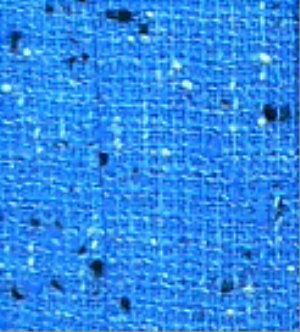
Knitted fabrics are machined in much the same way as hand knitting, to achieve a fabric that is held together by looping around itself, running in only one direction. Initially knitting machines more or less imitated hand knitting, but, today, can produce fabric in a huge variety of textures. Knit fabrics can be either warp knits (running lengthwise) or weft (running crosswise). The most common knits are jersey (a single weft knit), double knit (two interlocking weft layers), sweater knit (made of bulkier yarn to mimic a hand-knitted effect), and tricot (a single warp knit). Knitted fabrics are stretchy, to varying degrees, and generally wrinkle resistant or nearly so, making them very popular with those of us who don’t like to iron!
Polyester knit:
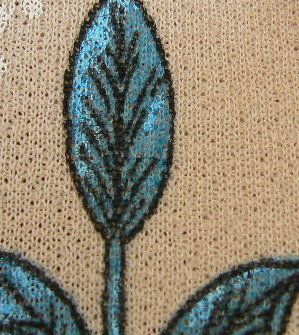
There are also non-woven fabrics, but we’ll mention these only briefly. These are compressed or bonded fabrics. The ones you’ll come across most commonly are wool felt, pellon interfacing, and fabrics made by bonding fibers to a backing (such as ultra-suede). Then there’s lace, but I’m not going there….
The biggest thing to realize is that almost any fiber can be made into a knitted or a woven fabric. E.g., polyester is not always a knit, and wool is not always a woven. I’m so frustrated when I see a listing for polyester dress, and there’s no mention of whether it’s a woven or a knit. If it’s not clear from the photo or the description, I’ll write the sellers to ask. Too often, the reply is, “I don’t know.” They just don’t understand the question. Which makes me crazy.
Here we’ve shown some examples of woven, knitted, and non-woven items we have available in our shops:
1940’s Novelty Weave Suit at Vintage Baubles Too
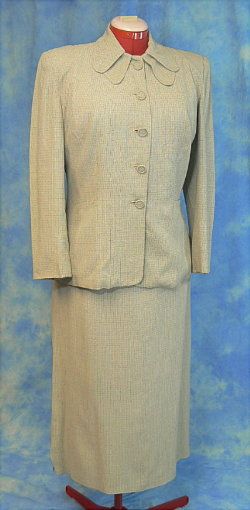
1980’s St. John Sweater-Knit Dress from CatseyeVintage
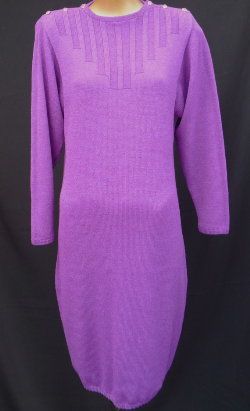
1960’s Blue Woven Wool Suit at AlleyCatsVintage on Etsy

1930’s/40’s Rayon Jersey Dress at MyVintageCocktail

1940’s/50’s Jacquard Taffeta Party Dress from CatseyeVintage
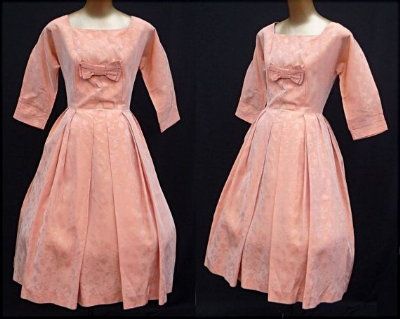
Royal Blue Wool Felt Hat at Alley Cats Vintage on Ruby Lane

No comments:
Post a Comment